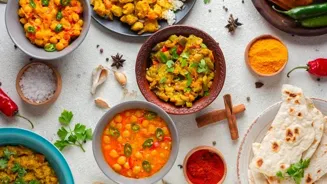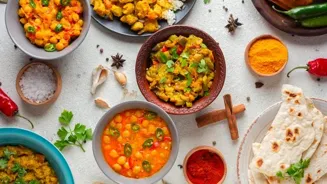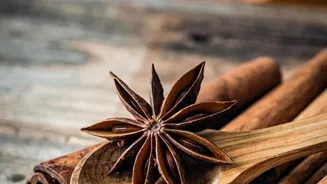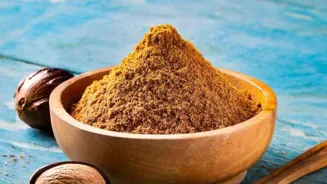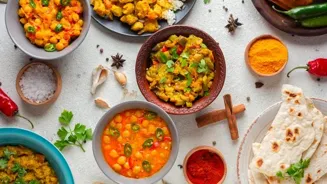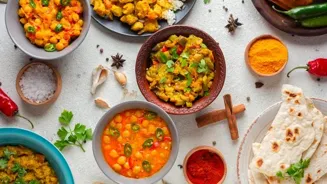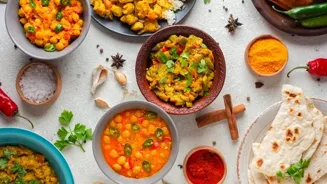Unveiling the Magic of Indian Spices: Elevate Your Cooking Skills with 10 Essential Facts! Discover the secrets behind aromatic flavors and how spices can transform your dishes. Dive into the world of Indian cuisine
and enhance your culinary journey now!
India, the land of vibrant colors and diverse cultures, is also the land of spices. Indian cuisine is renowned worldwide for its rich flavors and aromatic blends, all thanks to the magical world of spices.
Many home cooks find Indian cooking daunting, believing it requires years of experience to master. But the truth is, understanding a few key facts about spices can significantly elevate your cooking skills and bring the authentic taste of India to your own kitchen.
This article unveils 10 essential facts about Indian spices that will empower you to cook delicious and flavorful vegetarian dishes. Let's embark on this aromatic journey!
Spices Are More Than Just Flavor Enhancers:
Spices do much more than just add taste to your food; they are also potent health boosters. Turmeric, for example, contains curcumin, a compound known for its anti-inflammatory and antioxidant properties. Ginger aids digestion, while cloves have antiseptic qualities.
Incorporating spices into your daily cooking not only makes your meals tastier but also contributes to your overall well-being. Remember, freshly ground spices provide the most flavor and health benefits. So, consider investing in a small spice grinder.
Fresh vs. Ground Spices: A World of Difference:
While ground spices are convenient, fresh spices offer a vastly superior flavor profile. The volatile oils, responsible for the aroma and taste, dissipate quickly after grinding. Therefore, using whole spices and grinding them just before use yields a much more intense and nuanced flavor.
Spices like cardamom, cumin, and coriander are best used whole and lightly toasted before grinding to release their full potential. Storing spices correctly is also crucial. Always keep them in airtight containers away from direct sunlight and moisture to preserve their potency.
The Art of Tempering (Tadka): A Flavor Explosion:
Tempering, also known as "tadka" or "chhonk," is a quintessential Indian cooking technique where spices are briefly fried in ghee or oil to release their aromatic oils. This spiced oil is then added to a dish, infusing it with a burst of flavor.
Common spices used for tempering include cumin seeds, mustard seeds, asafoetida (hing), and dried red chilies. The order in which you add these spices matters; mustard seeds should be added first as they need to splutter before other spices are added.
This technique is often used in lentil dishes (dal) and vegetable curries to enhance their taste and aroma.
Understanding Spice Blends (Masalas): A Symphony of Flavors:
Indian cuisine often uses spice blends, known as "masalas," which are carefully crafted combinations of various spices. Some popular masalas include garam masala, sambar masala, and chana masala. Each masala is specifically designed to complement the particular dish it is intended for.
Creating your own masala blends can be a rewarding experience. Start with a basic recipe and experiment with different proportions to find your perfect blend. Store-bought masalas can also be used, but be sure to choose high-quality brands.
The Importance of Roasting Spices:
Roasting spices, whether whole or ground, is a critical step in many Indian recipes. Roasting enhances their flavor by intensifying their aroma and removing any raw taste.
Whole spices are typically dry-roasted in a pan over low heat until fragrant, while ground spices are roasted for a shorter time to prevent burning. Be careful not to over-roast the spices, as this can make them bitter. A light toasting is all that's needed to bring out their best flavors.
The roasting process unlocks flavors that simmering or sauteing alone cannot achieve.
The Role of Salt and Acidity:
Salt and acidity play crucial roles in balancing the flavors of Indian dishes. Salt enhances the taste of spices, while acidity, often provided by lemon juice, tamarind, or tomatoes, brightens the flavors and adds complexity.
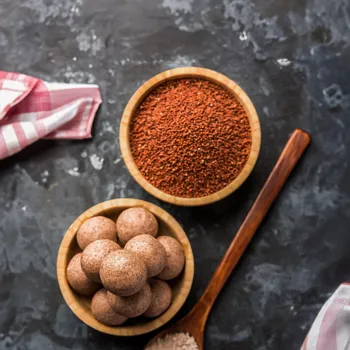
The right balance of salt and acidity can elevate a dish from good to great. Don't be afraid to experiment with these elements to find the perfect balance for your taste. A squeeze of lemon juice at the end of cooking can often make all the difference.
Knowing Your Spices: A Basic Spice Kit:
To embark on your Indian cooking journey, you'll need a basic spice kit:
Turmeric: Earthen flavor and yellow color.
Cumin: Nutty, earthy flavor.
Coriander: Citrusy notes.
Chili Powder: Heat!
Garam Masala: Warm and complex blend.
(Blend of cinnamon sticks, cloves, peppercorns, mace and cardamom)
Mustard Seeds: Pungent, nutty flavor.
Ginger(root): Zesty and warm.
Asafoetida (Hing): Pungent and unique flavour.
Cardamom: Aromatic , sweet flavour.
Cinnamon: Warm and sweet flavour.
With these spices, you can cook a wide range of Indian vegetarian dishes.
Start Small: Begin with Simple Recipes:
Don't be intimidated by complex recipes. Start with simple dishes like dal tadka, vegetable pulao, or aloo gobi (potato and cauliflower curry). These recipes require only a few basic spices and are a great way to learn about different spice combinations.
As you become more comfortable, you can gradually move on to more complex recipes. Patience and practice are key to mastering Indian cooking.
Taste as You Go: Adjusting Flavors:
The key to successful Indian cooking is tasting and adjusting the flavors as you cook. Spices can vary in potency, so it's important to adjust the amount of each spice according to your taste and preference.
Don't be afraid to add more or less of a particular spice until you achieve the desired flavor profile. Remember, cooking is an art, not a science, so trust your instincts and experiment!
Understanding Regional Variations:
Indian cuisine is incredibly diverse, with each region boasting its unique spice blends and cooking styles. For example, South Indian cuisine often uses curry leaves, mustard seeds, and coconut milk, while North Indian cuisine favors garam masala, cumin, and coriander.
Exploring these regional variations can broaden your culinary horizons and introduce you to a whole new world of flavors. So, start with the basics, then delve into regional cookbooks or online resources to discover new and exciting recipes.



